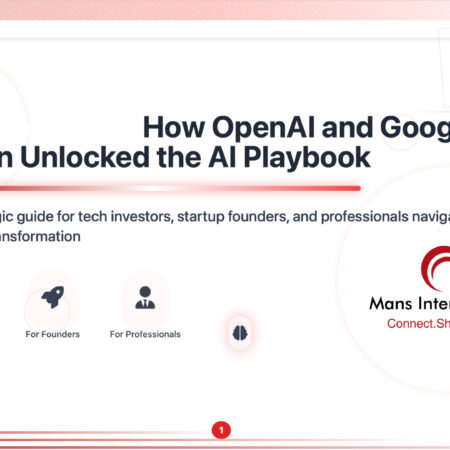Building with AI Agents: What Every Team Should Know
WAIC 2025 Recap: AI Agents Take Center Stage
The 2025 World Artificial Intelligence Conference (WAIC), themed “Intelligent Era, Shared Future”, brought together over 800 companies and 3,000+ cutting-edge innovations. One of the biggest highlights? A rare public keynote in China by Geoffrey Hinton — Turing and Nobel laureate — who explored the provocative question: “Will digital intelligence replace biological intelligence?”
But the real spotlight this year was on AI Agents. Beyond the buzz, they represent a paradigm shift — from using AI as a tool to integrating it as a core operator in enterprise workflows.
This session breaks down:
- What “AI-native thinking” really means
- The core logic of AI Agents
- How to evaluate and select the right AI Agent solution
- Real-world examples that show the path forward
I. From Digital 1.0 to AI-Native: A New Cognitive Framework for Business
Past: Digitization 1.0 — Humans Adapt to Systems
In the early digital era, humans were the glue between systems — manually logging into platforms, moving data, and pushing approvals. Think of a typical e-commerce operator juggling inventory, logistics, and finance portals daily.

Present: AI-Native — Systems Adapt to Goals
In the AI-native era, the AI Agent acts as the central brain. It understands goals (“launch a new product”), coordinates backend systems (SKU setup, inventory check, logistics alignment, budget approval), and only surfaces decisions that truly require human judgment.

Two Breakthroughs of AI-Native Thinking
- Shift of Control: From AI as a tool to AI as the process orchestrator
AI proactively breaks down objectives, allocates tasks, and drives execution. For example, a virtual assistant schedules meetings, books flights, and sends invites — all on its own. - Full-Chain Automation: Breaking data and workflow silos
AI Agents bridge operations across departments — linking customer touchpoints, internal systems, and vendor pipelines for end-to-end automation. A customer order might automatically trigger inventory deduction, logistics scheduling, and post-sale follow-up.
Bottom Line: This unlocks smarter digitization, reduces operational load, and enables flexible, goal-driven workflows that adapt at speed.
II. Evolution of Human–AI Collaboration: From ChatGPT to Agents
There’s growing confusion around ChatGPT, Copilot, and AI Agents. But their differences matter — especially for businesses aiming to delegate work, not just generate content.

III. Enterprise-Grade AI Agents: Four Core Dimensions
To avoid hype traps and identify enterprise-ready AI Agents, tech leaders should evaluate solutions across four core dimensions: business logic depth, data security, deployment maturity, and risk governance.
- Business logic penetration (Does it understand your domain?)
- Data security & Compliance (Can you trust it with your core assets?)
- Deployment readiness (Can you scale it without breaking things?)
- Risk management (Will it break your systems or reputation?)

The full list of 12 evaluation criteria, key questions, and real-world examples for assessing enterprise AI agents is exclusively available to our paid clients.
Contact us to request access to the 12 AI Agent selection criteria.
IV. Real-World Case: AI Agents in Healthcare
Use Case 1: Clinical Diagnosis Support
Old Way: Radiologists manually review scans, taking 30+ minutes per report.
AI Agent Way:
- Instantly fetches data from EMR, PACS, LIS.
- Uses AI imaging models to detect and flag anomalies.
- Summarizes and presents only key decisions for doctor sign-off.
→ Result: 80% time saved, doctors become strategic decision-makers.

Use Case 2: AI-Accelerated Research
Old Way: Trial-and-error over a decade.
AI Agent Way:
- Mines millions of case records to identify drug candidates.
- Simulates drug–gene interactions.
- Generates real-time research reports and next-step suggestions.
→ Result: 40% faster from bench to market.

V. Conclusion: Becoming an AI-Native Company in 2025
Step 1: Understand the value.
AI Agents reduce cost, boost agility, and free humans for strategic work.
Step 2: Start small.
Test high-impact scenarios like customer support or supply chain first.
Step 3: Scale intentionally.
Expand across functions, building a digitally autonomous architecture.
The age of AI Agents is here. They won’t just support your business — they’ll help redesign it from the ground up.
Are you ready to lead the transformation?
Course Features
- Lectures 1
- Quizzes 0
- Duration 2 hour
- Skill level All levels
- Language English
- Students 3566
- Assessments Yes


